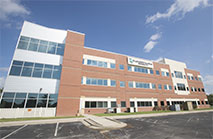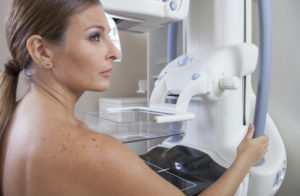Breast Cancer Screening – What To Do If You’re High Risk
 Breast screening recommendations can be confusing for all women, particularly so for those of higher than average risk. The first thing to establish is IF you are high-risk. This can be complicated, and a recent study suggested most women are not very accurate at predicting their personal risk. There are online tools which can help determine your individual risk, like this one here. Three major risk factors that will impact your individual risk include family history, a history of chest radiation therapy or diagnosis of certain types of cancers/conditions.
Breast screening recommendations can be confusing for all women, particularly so for those of higher than average risk. The first thing to establish is IF you are high-risk. This can be complicated, and a recent study suggested most women are not very accurate at predicting their personal risk. There are online tools which can help determine your individual risk, like this one here. Three major risk factors that will impact your individual risk include family history, a history of chest radiation therapy or diagnosis of certain types of cancers/conditions.
-
While not having a family history of breast cancer doesn’t make you exempt from risk, having a family member with breast cancer places you in a higher risk category. The closer relations matter most – a first degree relative (mother/father, sister/brother or daughter/son) means more than having a second degree relative (aunt/uncle, grandmother/grandfather) which means more than having cancer in distant relatives. More affected relatives is associated with greater risk. Another family-related risk for breast cancer is the rare cases of families with the BRCA1 or BRCA2 genetic mutations.
-
A history of radiation treatment to the chest area, usually due to Hodgkin’s disease between the ages of 10-30 years of age, is a risk for developing breast cancer.
-
The third category of risk is women with history of prior breast biopsy that showed cancer such as DCIS or invasive breast cancer or conditions including ADH and lobular carcinoma in situ. Having had a biopsy with these results increases risk for developing breast cancer in the future. A woman with a personal history of ovarian cancer is at higher risk for breast cancer, and having a family history of women with ovarian cancer may be associated with higher risk.
So to answer the plaguing question: what do I do now?
Determine your personal risk. If you are someone with an increased risk for breast cancer, talk to your healthcare provider. You may need earlier screening and/or additional screening. Here’s the breakdown:
-
The age to start screening mammography will vary based on your risk. If you have a first degree relative with breast cancer, it is recommended that you start annual screening mammograms 10 years before the age she/he presented, but not before age 30. So, if your mother had breast cancer that was found at age 42, you would begin screening at age 32. Because younger women often have denser breasts, other screening tests may also be recommended as well, including breast ultrasound and breast MRI.
-
For women whose increased risk has to do with exposure to chest radiation (as with Hodgkin’s disease patients), earlier screening will be suggested with mammography and/or breast MRI starting 8 years after radiation has been completed.
-
For breast cancer patients and for those with atypical findings on biopsy, MRI may be used in addition to yearly screening mammograms. Breast cancer patients may need every 6 month mammograms on the side of lumpectomy to follow the changes related to surgery in the years immediately following.
The most important thing is to get screened for breast cancer! For the majority of us, this will mean yearly mammograms starting at age 40. Additional imaging or earlier start to screening may be appropriate if your risk is higher than average, so knowing your personal risk will help your doctors help you.
Image credit: Risk! by junkmonkey via Flickr; Copyright: Creative Commons Attribution 2.0 Generic
Originally published 9/10/13 on mammographykc.om.





